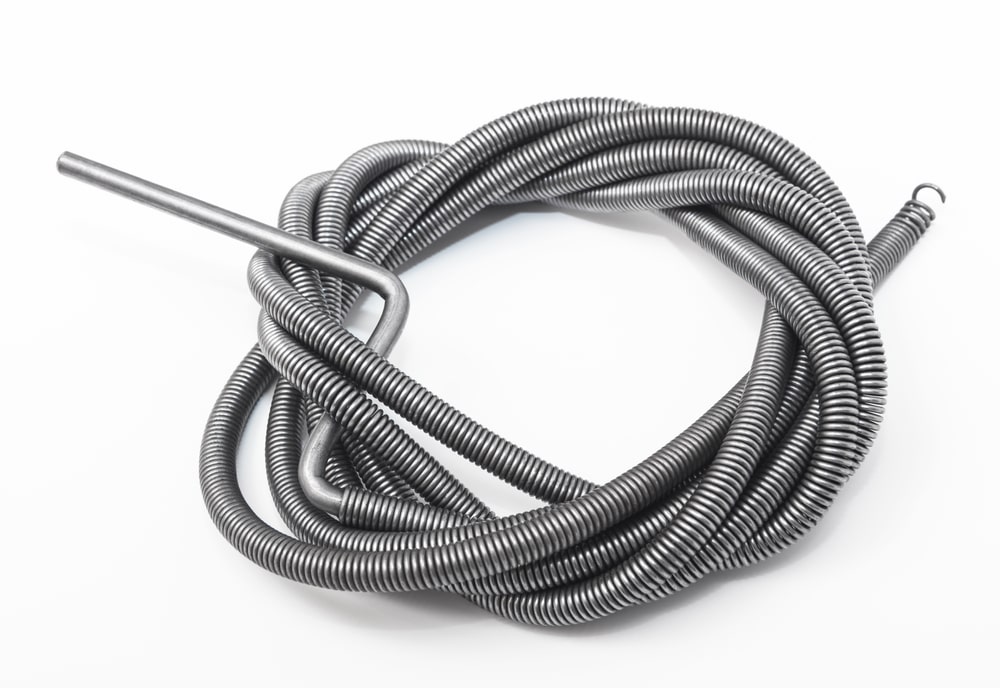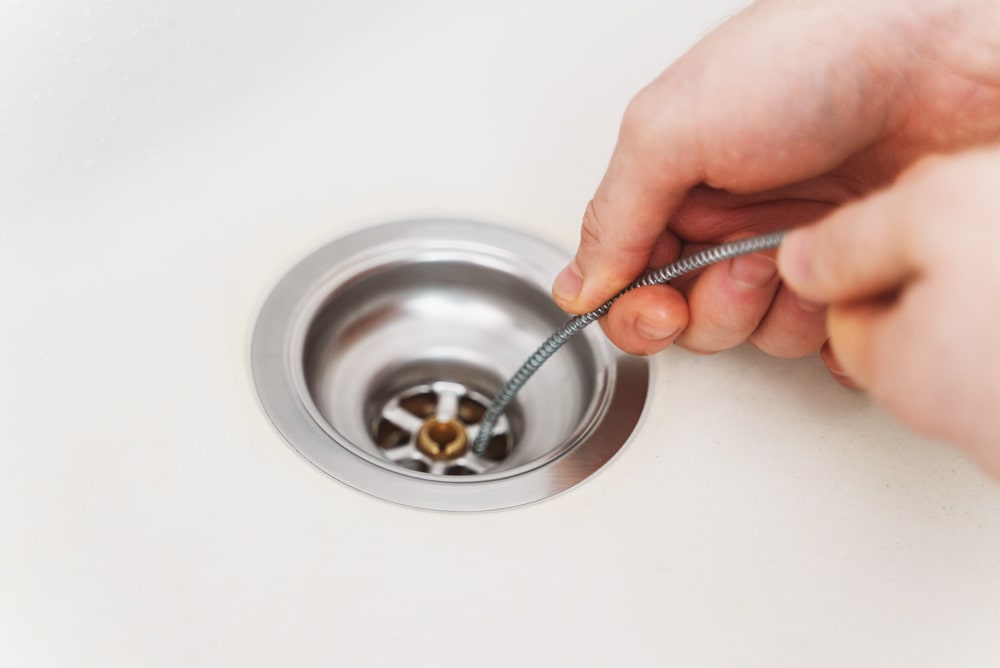One of the worst and most gross things you would ever encounter in life is a clogged toilet or sink. It’s a common yet difficult problem to deal with, especially if you don’t feel comfortable tinkering with plumbing fixtures.
Snake turn is a device that makes it easy to unclog sinks and toilets within just a few minutes. But as things stand, not everyone knows how to properly use a snake corner. Snake corners need to turn for it to be able to do its job. In this guide, we will talk about ways to make a plumbing snake turn corners.
Things to keep in mind before buying a snake turn
Snake turns are also known as augers. Before you go about buying one, there are several things to keep in mind.
First, sewer augers are available in different sizes. If you do not buy the right size, it would be useless. Not only would it be of no use, but it can even damage your pipes and toilets.
Plumbing snakes vary greatly in length and size. The largest type of plumbing snake is the sewer auger. Sewer augers can be up to 50 feet in length. As you can guess, using a sewer auger for a home toilet would be disastrous.
For domestic purposes, you would want a sink auger or a toilet auger. They come in standard sizes that work for most sinks and toilets.
Toilet augers have a diameter of 3/8 inches and a length of 3 to 6 feet. Sink augers, on the other hand, are 1/4 inch in diameter. Snake turns for sinks are typically designed for 1 1/4-inch and 1 1/2-inch sink pipes.
In some cases, the sink augers are wound into a coil inside a plastic drum and also have a handle. Snake turns for sinks are generally longer than snake turns for toilets.
Using the right plumbing snake is not only important but also indispensable. Using the wrong equipment is the biggest mistake that most people in terms of turning snake corners.
How to make a plumbing snake turn corners
Making a plumbing snake turn corners can be more difficult than it seems. But it is mostly because people are using the wrong technique. Turning a plumbing snake is easy when you know the right way to do it.
When using a snake, it is best to place the head inside the sink or toilet and move very gently without turning. Your run the risk of the snake coming out of the drain if you apply too much force. If the plumbing snake is of the right size, it should move into the pipe with ease if you push gently and softly.
Try turning the crank in the opposite direction if you think the plumbing snake is getting caught in a corner. This causes the head to bob up and down, but since you’re turning counterclockwise, no debris can gather. If the pipe bend is truly to blame, the snake should be able to navigate the turn due to its wobbling head. Note that the snake will be stuck if there are any barriers.
Now let us walk you through the steps of making a plumbing snake turn corners:
Step-by-step directions to make a plumbing snake turn corners
Step 1: Insert and Push the Snake Head
Cautiously push the snake’s head into the drain without rotating it. This is the only right technique to use a plumbing snake.
If the snake doesn’t go further, it has probably run into an obstruction. You need to come up with a new plan of action for showers without a P-trap.
To get the head through into the sludge, you must also be gentle while cranking. As a result of this, debris gathers on the snake’s head, so you have to clean it periodically.
If you push the snake inside and nothing comes up, the obstruction is probably due to some solid material. That’s one possible explanation for the head not being able to penetrate. Consider turning the crank in the opposite direction when you think the snake is stuck somewhere.
Because you’re spinning in the opposite direction from the head, the head of the plumbing snake would bob up and down. No filth can accumulate in that case.
The snake’s head should be able to clear the corner even if the curve of the pipe is the main problem. The plumbing snake will get trapped no matter what kind of obstruction there is.
Step 2: Remove the Obstacle
It’s not always possible to unclog a sink using a snake. Things that solidify in the drain are major causes of blockages. Additionally, that prevents the snake from entering the drain. If a plumbing snake isn’t working, neither would a plunger. In that case, your only option is to call a plumber.
It’s better to put the auger directly into the waste pipe after taking the trap out. This allows you to determine whether there are any blockages or not. If you hear water rushing through pipes without any leaks, it’s probably due to a blockage. The snake might work in some cases if the obstruction is no longer there.
Step 3: Tighten the thumbscrew
If the cable doesn’t rotate, the thumbscrew on the drain auger probably needs to be tightened.
To catch the blockage, a metal corkscrew is attached to a cable that runs from the auger’s drum part. A handle is on the side of the drum. You insert the corkscrew into the drain before turning it repeatedly. You then continue to turn for what feels like an eternity, but nothing changes. The reason is probably a loose thumbscrew.
The thumbscrew being too loose is a common cause of the plumbing snake malfunctioning. The thumbscrew that holds the cable within the drum or handle needs to be properly tightened. If it isn’t, the cable won’t revolve at all as you turn it. Pushing further into the clog won’t do anything. The drain snake must rotate in order to pick up the material.
Follow these steps to make your plumbing snake turn and unclog your toilets and sinks. If nothing works, consider using a power auger. But you may be better off simply getting a plumber to do the job for you. As we already said, doing the process incorrectly may do more harm than good.
Now that we are done with the steps, let’s answer some of the most common questions regarding using a plumbing snake.
How much time does it normally take to unclog a sink or toilet?
It takes a plumber around five minutes to snake a drain for obstructions near the toilet, sink, or tub. Based on the size and quantity of damaged pipes, main line sewer clogs might take several hours to clear with a snake.
Can plunging exacerbate a clog?
When you plunge too quickly or forcefully, a tight seal won’t develop, making your efforts largely futile.
Can WD-40 clear clogged drains?
The benefit of using WD-40 is that it breaks away the buildup and gunk by getting down under it, clearing the drain right away. Additionally, WD-40 breaks apart the links between rust and metal, so even if the pipes have interior rusting, that problem should also be solved.
Can a drain snake damage a pipe?
Pipes can be damaged by drain snakes. Drain snakes can be challenging to control even though they are advertised as tools that anybody can use. They can harm pipes if used incorrectly. To keep the pipes from rusting or decaying, many older homes have galvanized or zinc-coated pipes.
What tools do professional plumbers use to clear clogged pipes?
A plumber might employ a hydro jet for the most difficult of blockages. To dissolve drain buildup, this device forces water through pipes. In many cases, this equipment is quicker and more effective than a standard plumbing snake. Hydro jets clear the blockage and are also useful for clearing drains. These are professional-grade tools that only experienced plumbers can use effectively.
Other ways to unclog toilets
Now that you know how to make a plumbing snake turn corners, here are some other ways to unclog toilets and sinks. Keep in mind that these methods may not be as effective as using a plumbing snake. But you can give them a shot if you don’t have access to a snake turn.
Use hot water
Before using a snake turn, you should try unclogging the toilet or sink with hot water. It’s a simple yet effective solution. Take hot, boiling water and pour it slowly down the toilet. If there is a minor clog, it can rupture easily with hot water alone.
Use coke
Using coke to break clogs is an unusual method, but it works. Using coke may help you unclog toilets and sinks in some cases. Here’s how to do it:
- Take a bottle of Coke. Make sure it isn’t cold
- Pour Coke down the toilet or sink
- Leave it untouched for at least one hour
- Pour boiling water down the drain
- Repeat if required
Use a plunger
A plunger is a simple tool that can help you unclog pores. It is often the first tool that we think about when a toilet is clogged.
When using a plunger, be careful about pushing it into the toilet very gently at first. Pushing hard will lead to toilet water splashing all over. Once you get a hold of the first push, pull it up vigorously. A single attempt may not be enough to unclog the sink or toilet. Repeat the process until the toilet or sink is unclogged.
Baking soda and vinegar
If your toilet is clogged, add a cup of baking soda and wait a few minutes. After that, slowly pour two glasses of vinegar into the toilet.
It’s crucial to be slow and cautious when pouring baking soda and vinegar. It helps avoid toilet water spilling or spraying because vinegar and baking soda normally react to create bubbles. Give the vinegar and baking soda combination some time to work its magic.
However, you should first try to unclog your toilet with a plunger. Use this concoction only if the clog is too heavy for the plunger. This mixture will loosen the clog and make it easy to remove it.
Dish soap and hot water
Heat about a gallon of water. As the water heats, put some dish detergent into your clogged toilet. Inject the water into the toilet with caution when it is quite hot but isn’t boiling. As the dish soap and hot water dissolve the clog, wait 10 to 15 minutes.
When you do this, the toilet will flow smoothly and unclog. If you prefer not to leave your toilet, an option would be to flush your bowl with shampoo and hot water from the faucet.
Common bleach
General purpose bleach is another ingredient you can use to unclog toilets and sinks. Use the same combination and method as the dish soap and hot water solution. You only need to replace the dish detergent with 2 to 3 cups of bleach. After waiting 10 to 15 minutes, flush the toilet. This is a simple yet efficient way to unclog toilets, and all the necessary ingredients should already be in your home.
Get in touch with a plumber
Sometimes your toilets can have very serious clogs. If none of these solutions work, you are left with only one option — calling the plumber. However, it might be a smart decision to call the plumber without doing much experimentation yourself.
If you use plungers or snake turns incorrectly, they can damage the toilet. Using chemicals to unclog toilets can also be an unsafe option. Keeping these factors in mind, it may sometimes be better to call the plumber right away.
Dealing with a clogged toilet? Get an experienced plumber at your doorstep without dealing with all the fuss. Get in touch with San Diego Plumbing And Pipelining.








